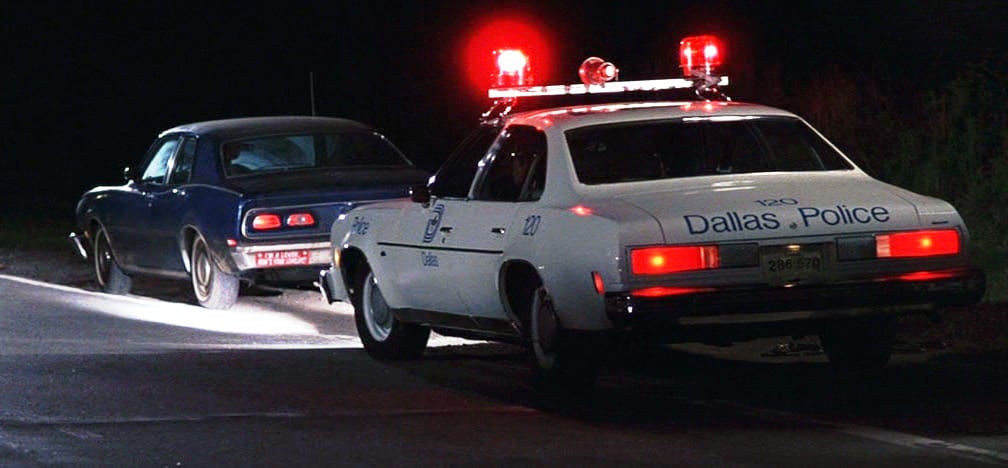Most film fans can name a favorite courtroom drama, whether it’s “12 Angry Men” or “Miracle on 34th Street.” One of the most popular genres in American television and movies, the legal drama even boasts 10 distinct subgenres of its own, from jury room deliberations to true crime documentaries.
And, as it turns out, the courtroom drama is also a distinctively American creation. What this says about American culture and our own legal system will be the focus of a new Department of Art History course this spring: Justice and Cinema, taught by Lida Oukaderova, associate professor of art history.
“I cannot think of any other country where the courtroom would be such a familiar space,” Oukaderova said. The genre has even become a popular export: adaptations of “Law & Order,” for instance, have spread across Europe.
“I've been reading literature in preparation for this class and some scholars say, ‘I talked to my colleagues in, for instance, Denmark and they know nothing about the Danish court system, but they know everything about the American court system,’” Oukaderova said.
The new Justice and Cinema course is one of many offerings within the Cinema and Media Studies minor, an interdisciplinary program that incorporates classes in English, Art History, Modern and Classical Literatures and Cultures, Visual and Dramatic Arts and more.
First offered in 2017, the Cinema and Media Studies minor has since become a popular option to pair with a wide range of majors from across Rice’s schools, said Martin Blumenthal-Barby, associate professor of classical and European studies.
“I don't think that people come into the classes knowing that they want to minor (in Cinema and Media Studies),” said Blumenthal-Barby, who’s overseen the minor since its inception, alongside Oukaderova and Gordon Hughes, associate professor of art history.
“But most people are just hooked,” he said. “And then they realize they can combine what they enjoy with their degree, and the minor is a natural conclusion.”
Crossing boundaries
Cinema offers a unique lens through which to observe culture. Yet because it’s such a popular and pervasive medium, Oukaderova said, students often approach film with a sense of expertise they don’t necessarily feel for, say, literature or art.
Many college students are well-versed in contemporary Hollywood productions, so studying the history and aesthetic principles that went into filmmaking beginning in the late 19th century provides a much-needed sense of perspective that is “often a totally eye-opening experience,” Oukaderova said.
“When we go back in time, they realize that to study film means to study politics, to study culture, to study technology,” Oukaderova said. “Film, like no other medium, crosses so many boundaries — low culture and high culture, science and art, technology and imagination — and that idea, for students, is usually quite new.”
But Cinema and Media Studies does not fixate solely on the old-school silver screen: The minor considers all forms of moving-image media, Blumenthal-Barby said, from YouTube videos and TikTok clips to Netflix series and NBC sitcoms.
“’Film’ itself is an ambiguous term,” he said. What’s important — indeed, more important than ever in an age of 24-hour news cycles and 24/7 social media engagement — is learning to practice visual literacy: how to read all those moving images critically, regardless of where you’re seeing them.
“Many students will probably continue to watch those things once they leave college —they’ll be presented with images, advertisements, whatever,” Blumenthal-Barby said. “So there is this set of competencies, this set of skills, that will likely benefit them the rest of their lives.”
‘A medium through which truth can be found’
As cinema and media studies continue to grow into lively and important fields of research and teaching, said Blumenthal-Barby, the program’s faculty at Rice are looking forward to growing the minor even more with a series of lectures in the spring and, perhaps soon, a major.
For now, they’re preparing for another busy semester of packed classes, including Blumenthal-Barby’s core course History of Cinema and Media I: Invention to 1945, Brian Huberman’s survey of that other all-American film genre, the Western, and a course taught through the new Department of Transnational Asian Studies: Tani Barlow’s History Through Film in East and Northeast Asia. Blumenthal-Barby will also be teaching the foundational History of Film and Media, Part 1, one of the minor’s required core classes.
Oukaderova has been readying her syllabus for the Justice and Cinema course, which touches on everything from Otto Preminger’s “Anatomy of a Murder” to Akira Kurosawa’s “Rashomon.”
Part of the course, she said, will focus on understanding what about the American courtroom, with its clearly delineated protagonists and antagonists, makes it particularly suitable for cinema. Another part will examine how documentary filmmakers participated in criminal investigations to either seek out the “truth” or overturn a verdict, as in the case of Errol Morris’s famous film “The Thin Blue Line.”
Considering the real-world consequences and ramifications that can arise from art, Oukaderova said, is only one reason to seriously contemplate the power of the ever-changing, all-present medium.
“These films are not only about judgment and finding truth but also about filmmaking itself, and how film can think of itself as a medium through which truth can be found and justice served,” Oukaderova said.


